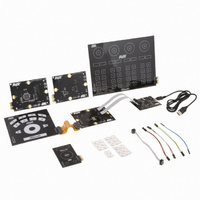ATQT600 Atmel, ATQT600 Datasheet - Page 38

ATQT600
Manufacturer Part Number
ATQT600
Description
KIT EVAL TOUCH FOR QT600
Manufacturer
Atmel
Series
QTouch™r
Specifications of ATQT600
Sensor Type
Touch Screen
Interface
USB
Embedded
Yes, Other
Utilized Ic / Part
ATtiny88, ATmega324PA, ATxmega128A1
Processor To Be Evaluated
ATtiny88, ATmega324, ATxmega128
Data Bus Width
8 bit, 16 bit
Interface Type
USB
Maximum Operating Temperature
+ 85 C
Minimum Operating Temperature
- 40 C
Operating Supply Voltage
1.6 V to 3.6 V
Silicon Manufacturer
Atmel
Kit Application Type
Sensor
Application Sub Type
Touch Sensor
Kit Contents
USB Bridge, MCU Cards, Touchpad Cards
Svhc
No SVHC (15-Dec-2010)
Mcu Supported Families
ATtiny88,
Rohs Compliant
Yes
Lead Free Status / RoHS Status
Lead free / RoHS Compliant
Voltage - Supply
-
Sensitivity
-
Sensing Range
-
Lead Free Status / Rohs Status
Lead free / RoHS Compliant
Available stocks
Company
Part Number
Manufacturer
Quantity
Price
Company:
Part Number:
ATQT600
Manufacturer:
Atmel
Quantity:
135
10620D–AT42–04/09
Mutual-capacitance Zero-dimensional Sensors
4.2.3
4-6
Ground Loading
One big advantage of a mutual-capacitance sensor is that because the coupling capacitance from X to Y
is being measured, any parasitic effects on X or Y are not so acute as they are with a self-capacitance
electrode.
Placing a ground plane in close proximity to the non-touch side of such a sensor should still be avoided
because it will desensitize the key. However, the overall effect is far less dramatic than for a self-
capacitance sensor.
Bringing ground floods or traces close to the X element of the sensor has little or no effect on sensitivity.
This is beneficial in most cases as it helps to shield X and Y traces on the layers below from interference
from strong electromagnetic fields nearby. The ground flood can be made very close to X. Another
benefit is that the ground flood helps to improve the overall free-space return path, which is particularly
important for small battery powered devices.
Figure 4-6.
Bringing ground floods or traces close to Y adds parasitic capacitance (Cp) and can cause loss of
sensitivity. Keep this in mind when flooding around keys; the interconnecting Y traces on layers below
the flood will suffer some additional Cp loading. Try to keep the Y interconnections to the layer farthest
from the flood (see
build-up on Y could be substantial due to the reduced separation between layers.
Figure 4-7.
Ground Flood Around X
Cross-section of a Multi-layer PCB
Ground
Figure
Y Trace Located Farthest
From Ground Flood
4-7). Be careful when adding ground floods on thin PCBs or FPCBs, as the Cp
X
Y
Via
Front Panel
Touch Sensors Design Guide













